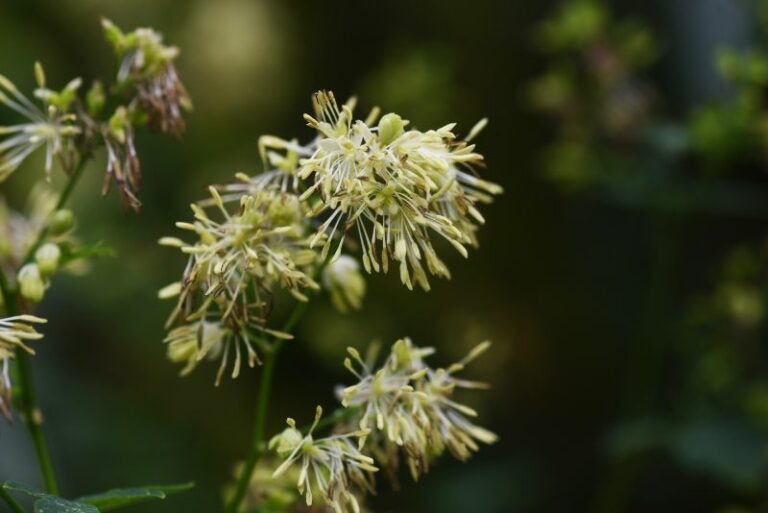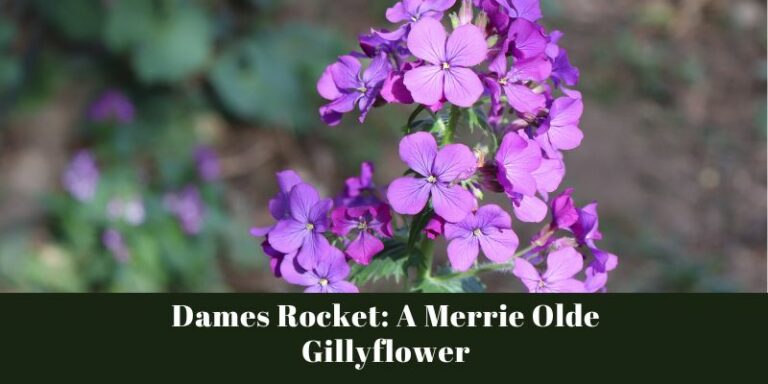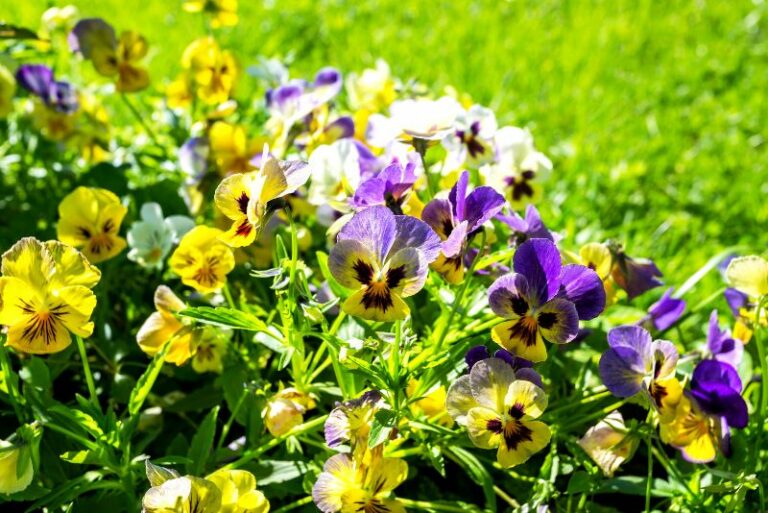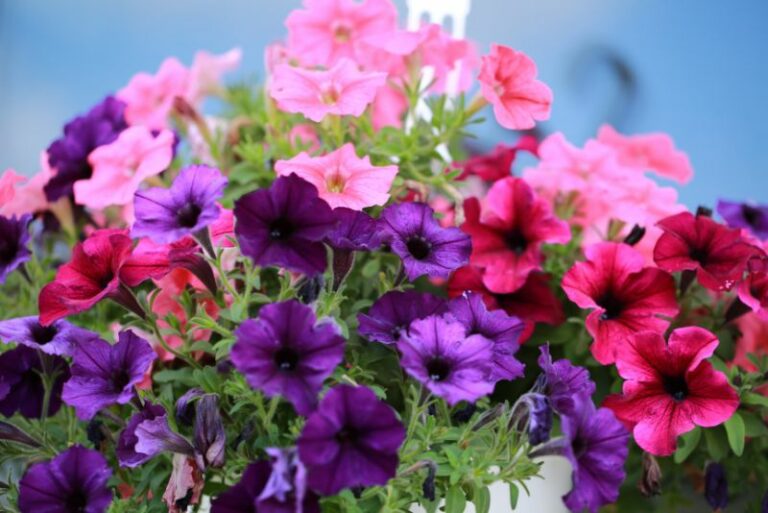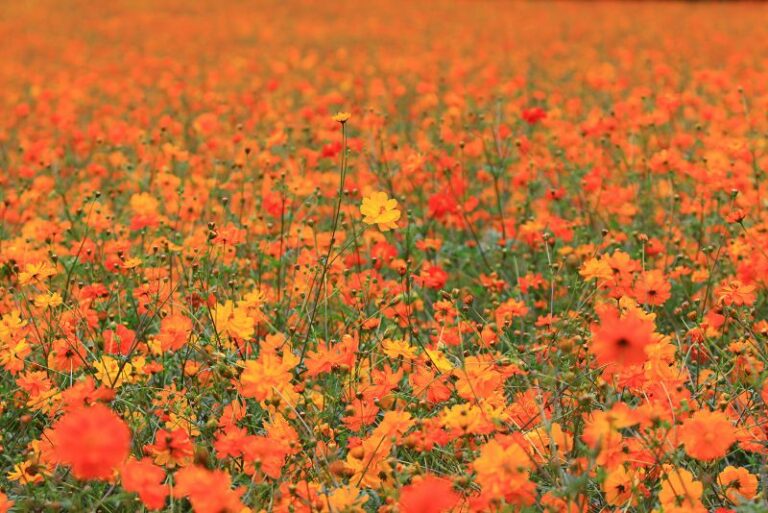Exploring Iris Diversity: A Comprehensive Guide to Iris Classification and Blooming Patterns
Iris flowers, famed for their intricate and varied patterns, have captivated gardeners and nature enthusiasts for centuries. With nearly 300 species and countless cultivars, irises offer a stunning array of colors, forms, and fragrances that enrich the horticultural world. As a gardener, understanding the diversity within the iris genus equips you to appreciate their unique charms and care for them properly. This comprehensive guide to iris classification and flowering sequences will elevate your iris knowledge and help you cultivate a garden that is vibrant with the color of these cherished blooms.
Understanding Iris Classification
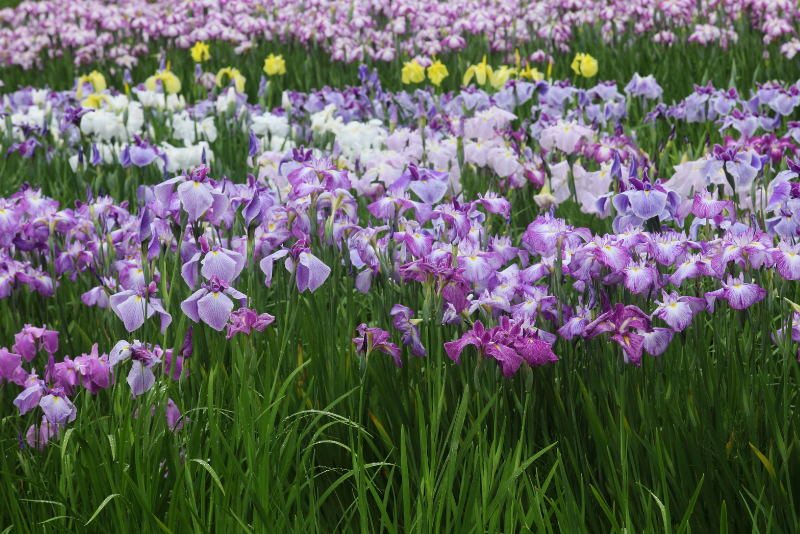
The iris family is vast and varied, with several prominent subfamilies, each with its own unique characteristics. Here, we break down the most well-known types of irises.
Bearded Irises (Iris germanica)
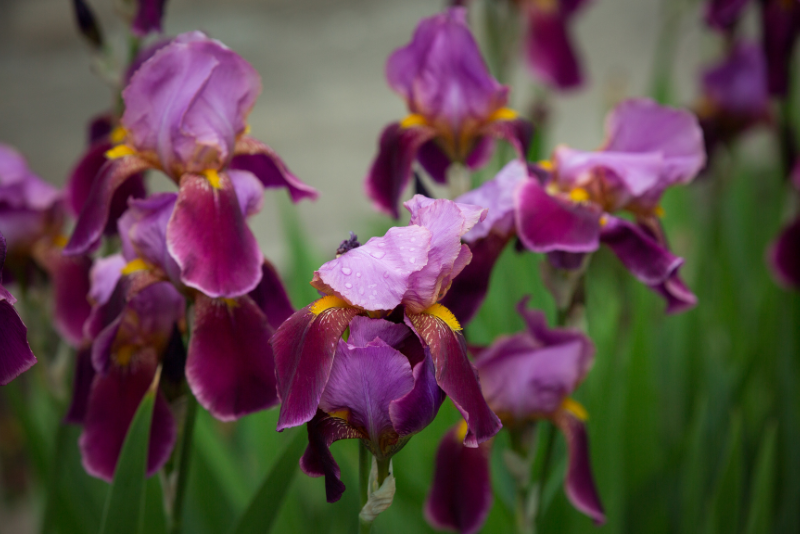
Bearded irises are perhaps the most popular garden irises. Their large, showy flowers often sport ‘beards’—soft, upward-growing hairs on the falls. Bearded iris cultivars are available in a wide range of colors, and they are known for their hardiness and ease of cultivation. They typically bloom in the late spring to early summer and are often the stars of the show in mixed perennial beds.
Siberian Irises (Iris sibirica)
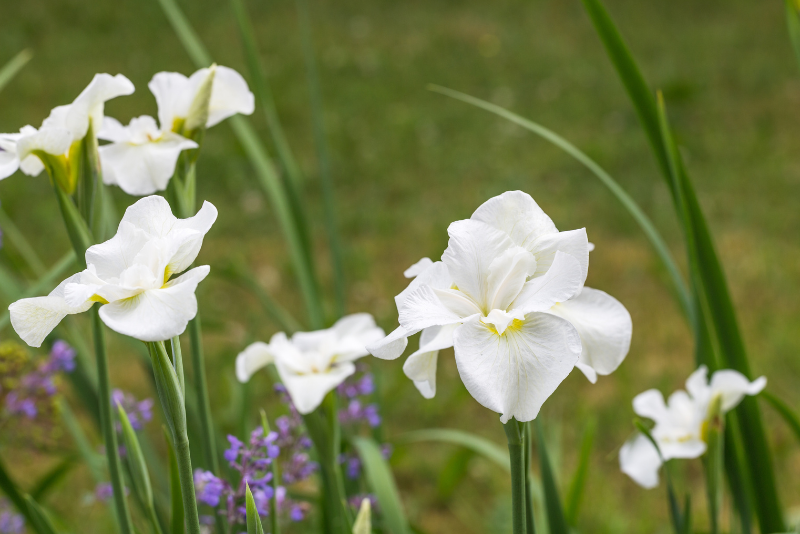
Siberian irises are elegant in their simplicity, with narrow, grass-like foliage and delicate, usually unmarked petals. These irises are valued for their ability to thrive in wet, boggy soils, making them a great option for water gardens. Their bloom time is similar to bearded irises, and they offer a lovely contrast when planted alongside each other.
Dutch Irises (Iris x hollandica)
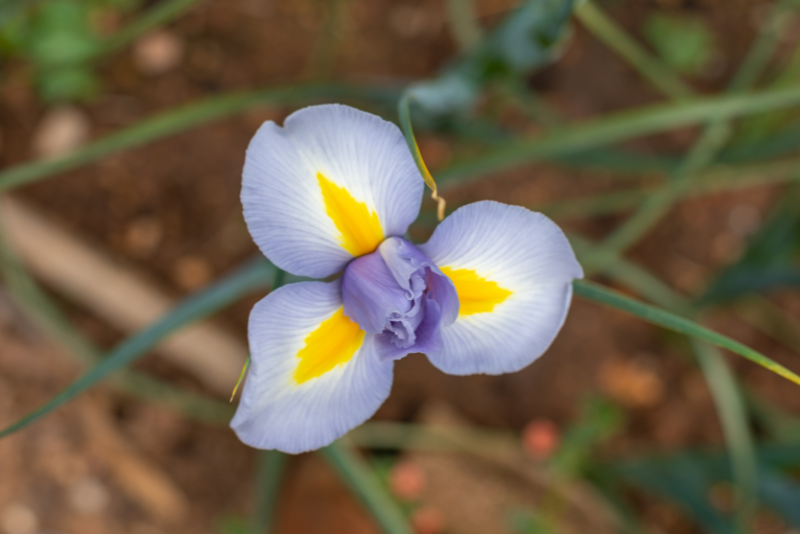
A triumph of the hybridizer’s art, Dutch irises are a cross between two species, I. xiphium and I. tingitana. They are notable for their large, open flowers and typically bloom early in the summer. Dutch irises are among the easiest to grow and have a wide range of uses, from cut flowers to containers and mass plantings.
Japanese Irises (Iris ensata)
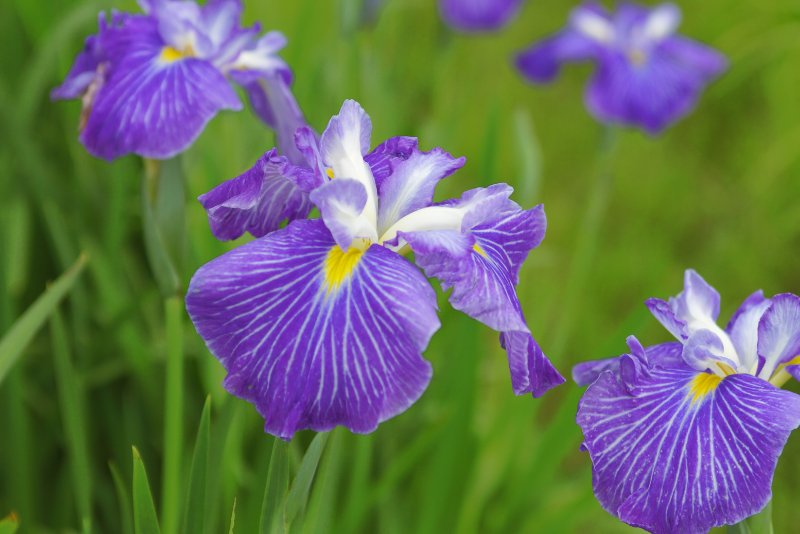
Japanese irises are the aristocrats of the iris world, with their breathtakingly large blooms and a preference for moist, even water-logged soils. They are traditionally used in the water gardens of Japan but have become garden favorites worldwide. Japanese irises generally bloom in the summer and are beloved for their intricate patterns and pastel shades.
Species Irises
This category encompasses the many irises that grow in the wild and serve as the foundation for the hybrid cultivars we enjoy today. Species irises vary in size, from diminutive Iris cristata that thrives in woodland settings to statuesque Iris pallida, known for its use in perfumery. They are a source of genetic diversity and strength within the iris genus.
Exploring Blooming Sequences
The key to a successful garden is diversity, not just in plant types but in the timing of their lifecycles. Understanding when irises bloom is crucial for planning a garden that offers continuous color and interest.
Early Spring Bloomers
Some irises, like the reticulata and danfordiae species, bloom as early as late winter or very early spring, providing a welcome burst of color when much of the garden is still dormant. These miniature irises are perfect for rock gardens and containers, where their diminutive size can be appreciated up close.
Late Spring to Early Summer Blooms
The majority of popular iris types fall into this category, including bearded, Siberian, and Dutch irises. This is the time when many gardens come alive with irises, signaling the arrival of summer. By selecting a mix of early, mid, and late-season varieties, you can extend the iris display for several weeks.
Summer Flowering Irises
Irises that bloom in the heart of summer, like Japanese irises, are often the stars of a more contemplative, water-centric garden design. With their reflective qualities and sultry colors, they can transform an area into a serene oasis.
Fall-Blooming Varieties
The bloom of most irises is defined by spring and summer. However, some including the appropriately named Iris domestica flower into the autumn. These late bloomers bring a touch of color to gardens as they wind down for winter or can even be the last flourish before the winter season.
Cultivation Tips for Different Iris Types
To grow a thriving iris garden, it’s essential to understand the unique needs of each variety and provide care that corresponds with their preferences.
Soil and Sunlight Preferences
Bearded irises, for example, prefer well-drained, slightly alkaline soils and full sun to encourage better flowering. Conversely, Japanese irises thrive in rich, acidic, moisture-retentive soils and can tolerate partial shade. It’s crucial to match the right iris with the right growing conditions to ensure their health and vigor.
Watering and Feeding Guidelines
Regular watering is necessary for irises to establish strong root systems, but overwatering can lead to root rot, particularly with bearded irises. In contrast, field irises like Siberian and Japanese require consistently moist soil to perform their best. Feeding irises with a balanced fertilizer in spring can promote robust growth and flowering.
Maintenance Practices for Healthy Irises
Pruning spent flower stalks and removing dead foliage is critical for maintaining the health and aesthetics of your iris garden. Bearded irises benefit from dividing the rhizomes every few years to prevent overcrowding and improve their vigor. Japanese irises, due to their rhizomatous nature, can also benefit from occasional division to keep clumps healthy and blooming generously.
Enhancing Garden Design with Irises
Irises bring not only color but also structure to garden designs, and they can be used in a multitude of ways to complement other plants and create pleasing arrangements.
Companion Planting Ideas
Combine bearded irises with low-growing perennials like catmint or geraniums for a layered, lush look in your garden bed. Tall, stately bearded irises can serve as a backdrop for smaller flowers, while Siberian irises make an excellent edging plant along walkways or the border of a garden.
Creating Iris Beds and Borders
Designing a dedicated iris bed or border allows you to showcase the beauty of these flowers in a setting that highlights their unique form and color. Group plants of the same variety or color together for maximum impact, or create a mixed border with a variety of iris types.
Tips for Continuous Blooms throughout the Season
Selecting a variety of irises that bloom at different times can ensure that your garden remains vibrant throughout the growing season. Create a planting schedule that takes into account the blooming times of your chosen varieties, and be sure to include plants that flower before and after your irises to create a harmonious flow of color.
Iris Care and Maintenance
A healthy garden is a well-cared-for garden, and irises are no exception. This in-depth section dives into specific strategies for keeping your irises in top condition.
Pest and Disease Management
Be vigilant for common pests such as iris borers and aphids, which can damage leaves and flowers if left unchecked. Practice good sanitation by removing debris and dead plant material to prevent disease. Fungal diseases like leaf spot can be an issue, particularly in wet conditions, but can be managed with proper spacing and air circulation.
Division and Transplanting Techniques
When it comes to maintaining a healthy iris garden, knowing when and how to divide and transplant your irises is essential. Mid-summer, after flowering, or in early fall is the ideal time to tackle this task. Carefully dig up the rhizomes, separate healthy offsets, and replant in prepared soil at the appropriate depth and spacing for the type of iris you’re working with.
Winter Care for Irises
In regions with harsh winters, protecting your irises is important. Mulch newly planted or sensitive varieties to prevent frost heaving. Bearded irises in particular can benefit from the glacial effect of winter, as it can help break dormancy and encourage healthy flowering in the spring.
Conclusion
The iris is a flower of great diversity and charm, suitable for gardens of all sizes and styles. By understanding the classification and blooming patterns of different iris types and applying the cultivation and care methods outlined in this guide, you can grow a garden that is a testament to the beauty and resilience of these enchanting blooms. Whether you’re a seasoned gardener or just starting out, the world of irises is rich with potential, and there’s always more to explore and discover.

